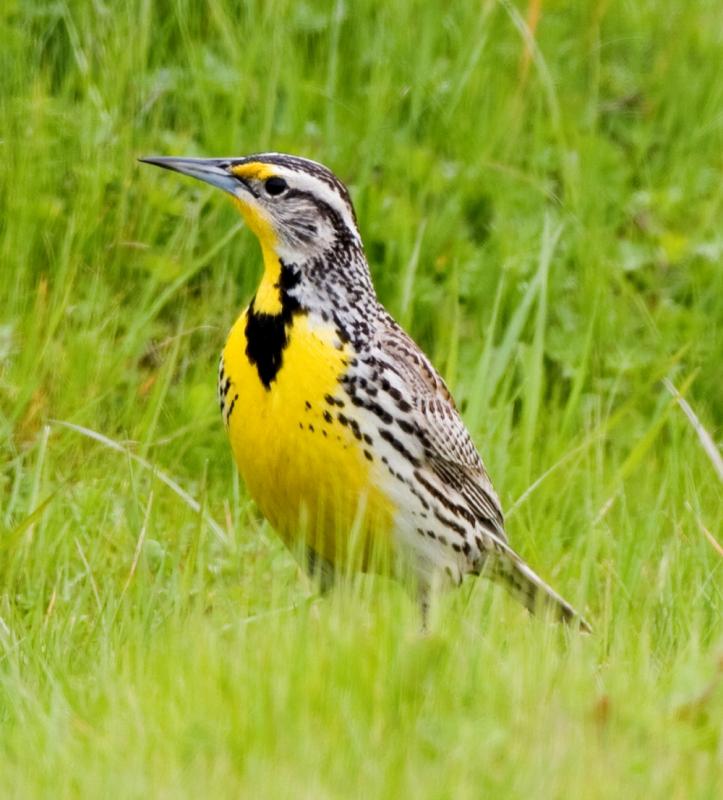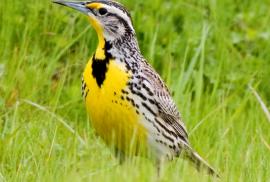Guide to Boreal Birds
Overview
Where its range has extended eastward beyond the Great Lakes, this bird has occasionally interbred with the Eastern Meadowlark. The two species are so similar that it was not until 1844 that Audubon noticed the difference and named the western bird neglecta because it had been overlooked for so long. Its bright colors, fearless behavior, abundance, and above all its loud, cheerful song make the Western Meadowlark one of the best known of western birds. The song is often heard on movie sound tracks even when the setting is far from the bird's range. The Western Meadowlark is also the state bird of Kansas, Montana, Nebraska, North Dakota, Oregon, and Wyoming.
Description
8 1/2-11" (22-28 cm). Robin-sized. Streaked brown above, bright yellow below, with a bold black V on breast. Very similar to Eastern Meadowlark, but upperparts paler, and yellow of throat extends onto cheeks. Best identified by voice.
Voice
Rich flute-like jumble of gurgling notes, usually descending the scale; very different from Eastern Meadowlark's series of simple, plaintive whistles.
Nesting
3-7 white eggs, with dark brown and purple spots, in a domed cup of grass and weed stems concealed in grass or weeds.
Habitat
Meadows, plains, and prairies.
Range/Migration
Breeds from British Columbia, Manitoba, northern Michigan, and northwestern Ohio south to Missouri, central Texas, and northern Mexico. Has spread eastward in recent years. Winters in much of breeding range north to southern British Columbia, Utah, and Arkansas.



